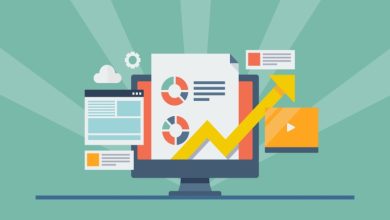How Is Data Fabric Used in Business Settings?

Data fabric is a term used to describe a network of interconnected data resources and services. It’s designed to provide a unified view of data across disparate systems and to enable the creation of new data-driven applications and services. Data fabric can be used in business settings to create a single point of access to data, allow for data sharing and collaboration, and to enable new data-driven applications and services. Keep reading to learn more about what is data fabric and how it’s used in business settings.
What is a data fabric architecture?
Data fabric refers to how data is stored and accessed across a network. In business settings, data fabric can be used to improve performance and scalability and make it easier for users to access the data they need.
One of the benefits of data fabric is that it can help organizations improve performance. When data is spread across multiple servers, it can be difficult for users to access. With data fabric, however, all of the data is centralized in one location, making it easier for employees to find what they need. Additionally, because data fabric allows businesses to scale their systems more efficiently, they can grow their operations without worrying about whether or not their infrastructure can handle the added load.
Another benefit of data fabric is that it makes it easier for businesses to comply with regulations. By centralizing data in one location, companies can ensure that all relevant information is accessible by authorized personnel only. This helps companies protect sensitive data and meet compliance requirements.
Can data fabric be used to manage big data?
Data fabric describes a platform that enables users to manage data across multiple servers, storage devices, and cloud services. It can be used to manage big data by allowing businesses to consolidate all their data into one location for analysis. This can help companies identify trends and patterns that may not be visible when data is spread over multiple systems. Data fabric can also help businesses improve performance and scalability by using the resources of different servers and storage devices as needed.
How can data fabric be used to improve business efficiency?
Data fabrics can help businesses improve efficiency by allowing them to manage and process data more effectively. Data fabric can help companies to make better decisions by providing accurate and timely information. Data fabric can also help businesses automate their processes, reducing the time it takes to complete tasks. Additionally, data fabric can make it easier for companies to share data with their partners and customers, improving collaboration and communication.
What impact has data fabric had on business analytics?

Data fabric has significantly impacted business analytics by providing a platform that allows for the aggregation, analysis, and sharing of data across different applications and organizations. This has allowed businesses to get a complete view of their operations, identify potential issues and opportunities earlier, and make better decisions faster. Additionally, data fabric has helped simplify the process of data integration and management, resulting in improved performance and efficiency.
Data fabrics are used increasingly in business settings to manage and analyze data. By using a data fabric, companies can store data in one place, make it accessible to everyone who needs it and use it to make better decisions. Data fabrics can also improve department communication and create a more streamlined workflow. Additionally, data fabrics can help businesses identify trends and patterns that they may not have been able to see before and grow the business. These benefits make data fabrics an important tool for businesses of all sizes. This can help businesses to improve efficiency, better understand their data, and enhance business operations.





